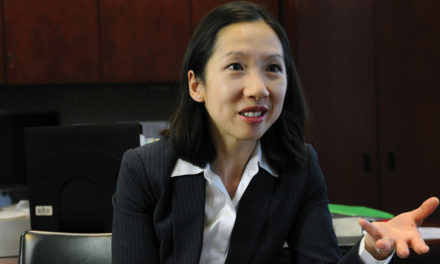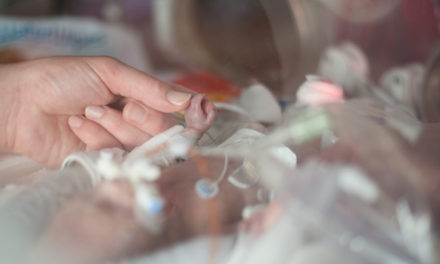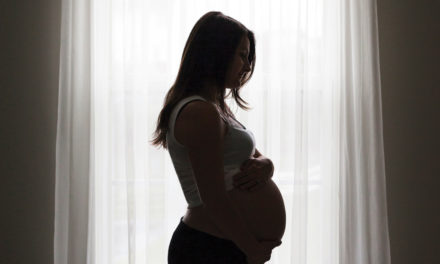What do mice and humans have in common?
For many modern scientists, the answer is “not enough.” That’s why, according to a notice from the Food and Drug Administration (FDA) published in June 2018, researchers need to implant cells from human livers and thymuses into rodents, to give the mice a functioning “human immune system.” This way, scientists can study the chimeric creatures to hopefully find new ways to treat and cure a variety of human diseases.
Take human tissues, manipulate and experiment with them and use them to advance science and health outcomes. That’s the modern idea, anyway. It’s a contemporary cycle researchers have been using for decades, starting back in the 1930s with transplantation attempts.
But besides blending human and animal, another moral quandary exists, according to pro-life organizations across the nation: where these liver and thymus cells—as well as a variety of other organs and tissues—originate.
Spoiler alert: They don’t come from benevolent adults who donate their bodies to science after passing away, nor from grieving mothers who have miscarried.
They come from the corpses of aborted children. And that’s something pro-lifers want to stop as quickly as possible.
They scored their first victory last fall when the Trump administration killed a year-long contract with a California company, Advanced Bioscience Resources, Inc. (ABR). The contract was for less than $16,000, but it symbolically stood for far more in the eyes of pro-life advocates.
“So long as [the U.S. Department of Health and Human Services] trades taxpayer dollars for freshly aborted baby body parts, the U.S. government is setting its own abortion quotas and sending the message that these children are worth more dead than alive,” the Center for Medical Progress (CMP) announced in a Sept. 24 press release. “By terminating a grotesque contract for ‘fresh’ aborted baby parts from Planned Parenthood’s business partners ABR that never should have been signed in the first place, [the government] has taken a small first step to stop the epidemic of trafficking tiny baby hearts, lungs, livers and brains from late-term abortion clinics into government-sponsored laboratories for taxpayer- funded experimentation.”
American Tradition
ABR is what’s known as a tissue-procurement organization (TPO). Essentially, these groups act as middlemen, purchasing bits of babies from abortion facilities before selling them to researchers, including the U.S. Department of Health and Human Services (HHS), FDA and National Institutes of Health.
From there, the buyers experiment on the tissue, looking for relief from Parkinson’s, Huntington’s disease and other degenerative conditions. The fetal tissues, scientists say, are ideal for lab use because the cells divide quickly and adapt to a variety of environments. Indeed, “fetal tissue remains a critical resource to further researchers’ understanding of how human tissues develop and are affected by disease,” wrote Thomas Baldwin, president of the Federation of American Societies for Experimental Biology, in a letter to Congress last September.
It’s a practice that has longstanding roots in American health: The ability to grow viruses in a lab was accomplished with the help of fetal brain, intestine and limb tissue in 1948. Some vaccines continue to be produced by growing cells derived from two healthy late-term babies aborted in the 1960s. (No vaccines are made from freshly aborted fetal tissue.)
The reason? According to the Children’s Hospital of Philadelphia, viruses need cells to grow, and human viruses grow better in human cells than in those obtained from animals. Additionally, almost all cells die after
dividing a certain number of times, but fetal cells can handle many more divisions before expiring, lengthening their shelf life in labs.
These are not the youngest fetuses, either: According to the Guttmacher Institute, Planned Parenthood’s research arm, all fetal tissues used for research are at least nine weeks or older. And it’s abortion, in fact, that makes babies so desirable to scientists, as those who are miscarried often suffered from abnormalities or trauma. Those tissues can’t always be obtained in a manner timely enough to meet research demands, either.
Supply, demand, repeat. Use the weak to strengthen the strong. It’s a cycle, says Oregon Right to Life, that’s supported by the American abortion cartel.
“We are all impacted by the devaluing of human life through abortion in our culture,” Executive Director Lois Anderson tells Citizen. “This research is not possible without a robust abortion industry. That makes [researchers using aborted fetal tissue] part of the problem, not a part of the solution.”
Moneymaking Middlemen
ABR opened its doors in Alameda, Calif., in 1989 as a “nonprofit corporate foundation” specializing in procuring tissues from abortions, as well as umbilical cord blood, according to company documents posted on CMP’s website.
On January 22, 1993—the twentieth anniversary of Roe v. Wade—President Bill Clinton directed HHS to end a five-year moratorium on federal funding of research using aborted fetal tissue. This provided TPOs incentive to keep business flowing, given the scope and reliability of the taxpayer piggybank.
From there, HHS released guidelines in 1994 and again in 2003 on the ethics of fetal organs and tissues taken from aborted babies. The basics: TPOs, clinics and/or abortionists cannot profit from the sale of body parts; they can only get reimbursed for costs like shipping. Other rules include prohibiting abortionists from asking women still contemplating their decision whether they would like to donate their child’s body.
TPOs became a hot topic in 2015 when CMP released videos of Planned Parenthood staff callously haggling over the prices of aborted corpses with undercover investigators. Though most Americans were shocked when one executive joked, “I want a Lamborghini” in reference to a price she felt was too low, companies like ABR had been quietly participating as “nonprofit organizations” in the American economy for years.
Indeed, according to a recent ABR tax return, the “nonprofit” pulled in more than $1.3 million in 2016 alone—all from the “direct charitable activity” of “obtain[ing] and deliver[ing] fetal tissue to medical researchers.” Sometimes, ABR’s bottom line has been as much as $1.5 million, while its highest-paid employee makes about $173,000 annually.
Here’s how: When congressional committees began investigating TPOs in September 2015, they found that while most pay abortion facilities approximately $45 to $60 per “specimen” (translation: body part), they inflate the price when selling the tissues to researchers. ABR’s price menu, for example, ranges from $340 to $550, depending on “processing costs,” according to a memo from the Democrats on the House Energy and Commerce Committee.
Part of that payday comes from the United States government. Last summer, for example, the FDA signed the aforementioned contract with ABR to acquire “fresh” tissues from aborted children to transplant into mice.
ABR isn’t the only one in this grisly limelight. The NIH has a seven-year contract ending in 2020 with the University of California-San Francisco worth more than $13 million for procuring intestines, livers and thymuses from healthy 18- to 24-week-old fetuses aborted electively. That single project, however, is dwarfed by the $98 million the NIH spent on fetal tissue research in fiscal year 2017, and its $103 million projected spending through FY 2018. Meanwhile, Oregon Health and Science University (OHSU)—a taxpayer-supported teaching hospital—told the press in August 2015 its researchers don’t use aborted fetal tissue—but reports later revealed they did exactly that. The “store” where they bought those organs? ABR.
“We worked for two years along with legal counsel to get public records from OHSU about their research and purchases of baby parts,” says Anderson of Oregon Right to Life. “We are working on state legislation to ban the practice. We have to keep speaking out, doing research and proposing solutions.”
Momentum
Largely due to CMP’s undercover work, Congress began investigating Planned Parenthood, ABR and other abortion facilities and TPOs in 2015. In December 2016, Senate Judiciary Committee Chairman Chuck Grassley (R-Iowa) referred multiple Planned Parenthood affiliates, as well as ABR and two other TPOs, to the FBI and Justice Department for investigation and possible prosecution. The investigation is ongoing.
In the meantime, pro-lifers have been encouraging political leaders to respect the remains of America’s smallest. In a Sept. 11 letter to HHS Secretary Alex Azar, 48 influential men and women within the pro-life movement—representing organizations ranging from the Susan B. Anthony List to Priests for Life—urged him firmly to cease all government purchases of aborted fetal tissue in favor of more ethical alternatives.
“We expect far better of our federal agencies,” they wrote. “It is completely unacceptable to discover that the FDA is using federal tax dollars and fomenting demands for human body parts taken from babies who are aborted. These experiments using aborted fetal organs are neither responsible nor do they meet even modest ethical standards, and there are serious questions about the legality of methods used to procure the aborted baby organs and tissue.”
Besides the legality and ethics of experimenting on murdered humans, the signers raised another important point: Thanks to advances in stem cell technology, the practice of using aborted fetal tissue may be on its way out.
“[G]ood scientific alternatives exist to this grisly sourcing, including use of human umbilical cord blood stem cells and adult peripheral blood stem cells,” the letter stated. “There are abundant modern scientific alternatives, making aborted fetal tissue unnecessary.”
Dr. David Prentice, vice president of research at the Charlotte Lozier Institute, wholeheartedly agrees. “Use of aborted fetal tissue is decades old, but the science has improved tremendously in the last decade or two,” he tells Citizen. “Use of adult stem cells from bone marrow and umbilical cord blood, as well as from previously discarded tissue after we’re born, [has] proven to be better science.”
Thankfully, HHS listened, and last September released a statement announcing it was canceling the FDA-ABR contract, saying administrators were “not sufficiently assured that the contract included the appropriate protections applicable to fetal tissue research or met all other procurement requirements.” HHS also ordered reviews of all federally funded fetal tissue research, as well as searches for “adequate alternatives … to the use of human fetal tissue in HHS-
funded research” while “ensur[ing] that efforts to develop such alternatives are funded and accelerated.”
Pro-life leaders were heartened, though they knew it was just the beginning.
“Canceling a single contract and conducting a review is a small step forward, but overall is completely inadequate,” Susan B. Anthony List President Marjorie Dannenfelser said in a written statement.
Indeed, “there is a great likelihood that this first attempt will not be successful,” says Anderson. “What we do have faith in is the fact that many committed pro-life people have been placed in positions of influence by the [Trump] administration. They will continue to work for an end to this practice.”
Futures for Fetuses
One month after HHS ended the FDA partnership with ABR, CMP Founder David Daleiden submitted evidence to a federal judge in Oakland, Calif., showing ABR and Planned Parenthood allegedly had lied about and possibly altered invoices and records of their business relationship.
“As the U.S. Department of Justice continues to follow up on the criminal referrals for Planned Parenthood and ABR, it is imperative for prosecutors to seize the original financial records from Planned Parenthood and their accomplices immediately, so these depraved enterprises cannot continue to cover up their criminal sale of baby body parts,” Daleiden told LifeSiteNews. As this issue of Citizenheaded to press, no judicial decisions had been made.
And though high-level work like CMP’s is imperative, Anderson points out that large organizations aren’t the only ones that can affect change within the debate.
“Pro-lifers … can become informed about the issues surrounding the baby parts market and the connection to medical research,” she says. “They can communicate with their members of Congress about the research, and they can find out if there are institutions in their states conducting research using baby parts and ask their state office holders to end funding.”
Ultimately, pro-lifers say, this topic is simple:
As CMP stated, “HHS’s mission to ‘serve all Americans from conception to natural death’ cannot permit trafficking unborn children to stitch their body parts into lab rats.”
For More Information:
To find out more on the Center for Medical Progress, visit centerformedicalprogress.org. For further information on the Charlotte Lozier Institute, see lozierinstitute.org. Oregon Right to Life’s website is ortl.org.
Originally published in the Jan/Fed 2019 issue of Citizen magazine.






